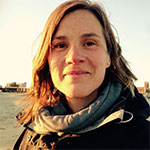Welcome to our project page! Here we present our collective research on farming. You are very welcome to contact us: sofie.joosse@slu.se, ann.grubbstrom@slu.se
The Swedish agricultural landscape is changing rapidly, with larger and fewer farms. This trend will continue over the coming 10 years as one in three farmers is over 65 and often without successor. How do farmers deal with this changing agricultural landscape? What happens with family farms? Who will be the future farmer? And how will he/she farm? Below we introduce different farmer groups that we have addressed in different studies. Beneath each introduction you can find our publications on these farmer groups.
The immigrant farmer

Farmers may also come from outside of Sweden. Indeed, Sweden attracts farmers from a variety other countries, such as the Netherlands. As newcomers to this context these farmers need to creatively design various holding arrangements and farm managements. These migrant farmers typically work enthusiastically and many over hours to establish the farm of their dreams. Common for their narrative is a wish to make the business more efficient, yet in doing so; they meet challenges as risking their health, personal relationships and expose themselves to work-related accidents.
Grubbström, A. and Joosse, S. (2021) New Entrants in Agriculture–The Case of Young Im-migrant Farmers in Sweden. European Countryside, 13(1), pp.22-37.
The new farmer
Farmers are not always born farmers. As many family farms lack a family successor, selling or leasing to a so-called new entrant can ensure the continuance of (family) farms. In contrast to much of the existing research and policy, we suggest that non-family succession does not necessarily leads to continuity and innovation in farm management, and family succession not necessarily to continuity in farming practices. Our findings further suggest that policy schemes for matching retiring farmers and new entrants could be helpful as many farmers have difficulties finding a family successor and some new entrants feel they miss out on support from experienced farmers..
Joosse, S., & Grubbström, A. (2017). Continuity in farming-Not just family business. Journal of rural studies, 50, pp. 198-208.
Podcast from the Financial Times about new entrants and generational change in agriculture featuring Sofie Joosse and Ann Grubbström: https://www.ft.com/video/f2519a5c-2b9e-4b7b-90c2-34626c956cd3
The retired farmer

What happens to the farm when the farmer retires and there is no family successor? Often farmers resort to leasing or selling their land. That decision has implications for the community and the rural landscape for generations to come. The retiring farmer typically takes much care to select a fitting buyer/lessee. Nonmonetary values and motivations, such as social interaction and concern for the environment, the rural community and the agricultural landscape play a central role in this selection. .
Grubbström, A., & Eriksson, C. (2018). Retired Farmers and New Land Users: How Relations to Land and People Influence Farmers' Land Transfer Decisions. Sociologia Ruralis, 58(4), pp. 707-725.
The social farmer
When both the number of farms and the number of farmers decrease, farmers have fewer and fewer colleagues nearby. What does that mean for collaboration and support? Will this lead to new interactions, or new ways of communicating and modes to exchange experiences? We are interested in exploring the types of networks that farmers use, and have a closer look at their use of social media for farm-related learning and support.
Nothing published yet, but soon coming!






